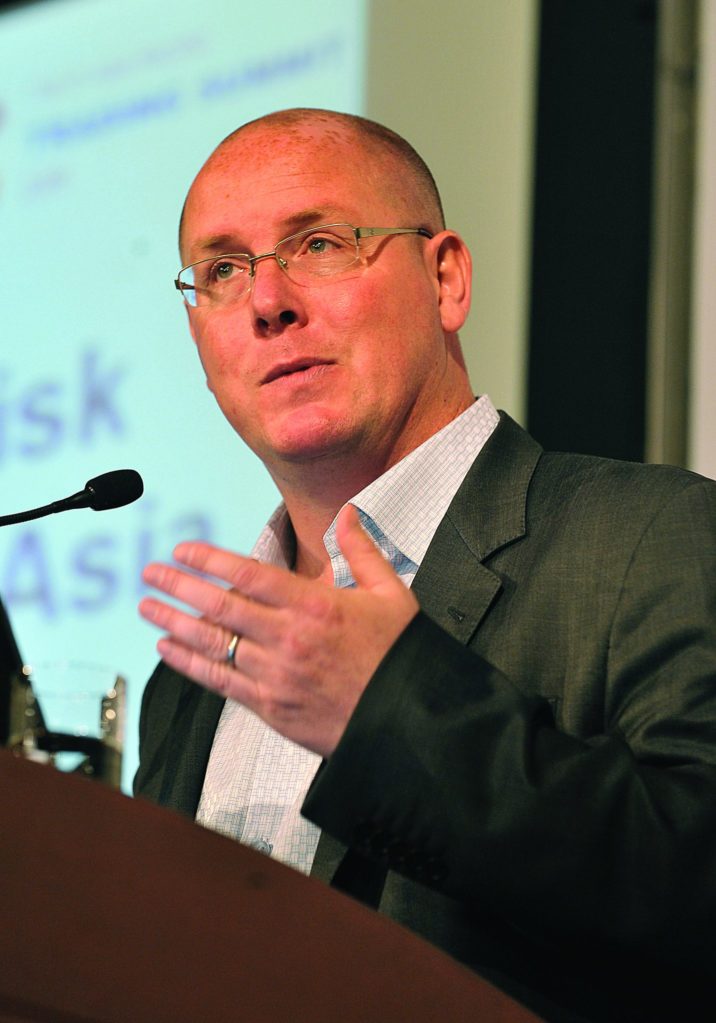Everybody remembers Nick Leeson, the young trader who broke Barings Bank—where the Queen was a customer—but few recall the African connection.
It was the last couple of pages of a report written by the board of banking supervision issued on behalf of the Bank of England, alleged that Leeson had a number of assets in South Africa.
This document was issued six months after the collapse of Barings Bank in 1995, when Leeson lost it GBP 862 million pounds ($1.4 billion) through unauthorized trading.
“I’d never been to South Africa at that stage. The only connection I can draw is that we did have a couple of South African clients that we transacted futures for…but that’s the only South African connection,” says Leeson.
The 46-year-old was in Johannesburg for a few days speaking about risk management, compliance and corporate responsibility laced with his remarkable story.
Barings Bank was the oldest merchant bank in London and had funded the Napoleonic wars. Leeson, the son of a plasterer from Watford, was seen as the whizzkid in the Singapore office.
He made huge profits for the bank and was very successful in speculative trades, but lost his midas touch when he tried to hide losses from bad trades in an error account called 88888. It had been set up to cover up a mistake made by an inexperienced trader. Instead of taking a loss, Leeson played the odds in an attempt to recover money.
It all fell apart when Leeson placed a short straddle—a risky strategy an investor uses when he or she believes that a stock’s price will not move up or down significantly—on the Nikkei, banking on the exchange remaining stable overnight. Leeson should have been safe in such a position, but the Japanese earthquake on January 17, 1995, in Kobe caused the Nikkei to go into free-fall.
Facing huge losses with Asian markets in panic, he tried to recover the losses with short-term gambles based on the recovery of the Nikkei. Unfortunately, the earthquake dashed these hopes.
Back in London, the Bank of England rejected a bailout days before Barings declared bankruptcy. The Bank almost went bust in the 1890s over investments on Latin American bonds, this time there was no reprieve.
Feeling helpless, Leeson fled the country leaving a scribbled note saying “I’m sorry”. He was arrested in Germany, and nine months later was extradited to Singapore where he was sentenced to more than six years in prison.
Leeson was the only Englishman in a prison full of triad gangs. He was locked up in a tiny cell with two others for 23 three hours a day.
In prison, Leeson was diagnosed with colon cancer and lost weight and most of his hair from chemotherapy. The Singapore authorities were determined not to allow their high profile prisoner to die behind bars and assigned him the doctor of former Singapore president, Lee Kuan Yew. In prison, Leeson wrote his autobiography, while back in London Sir David Frost was producing a film about his life.
“The film came out before I did,” he chuckled.
Writer and director of the film, James Dearden, pretending to be Leeson’s uncle, flew to Singapore to discuss the plans with him, but little passed between the two.
“That’s the only input I had in the movie. It was a standard 15-minute visit. The questions he was asking weren’t specifically about what was going on. It was more like how are you, have you seen your aunt? He only asked a few questions concerning the movie,” says Leeson.
Then Leeson was released after four and a half years on the grounds of his health and good behaviour. He has now recovered fully from cancer and lives in Galway, Ireland with his second wife and three children.
In 2006, he became CEO of Galway United, a professional football club. He resigned in 2011, but remains a shareholder. While working at the football club Leeson published his second book, Back from the Brink, Coping with Stress.
Leeson has tried his hand at online poker and is now a speaker for conferences and dinner’s around the world, getting paid to talk about risk and corporate responsibility—even though he’s the face of catastrophic failure in both fields.
Thirteen years after his release from prison, Leeson was appointed as an alternative insolvency practitioner at GDP Partnership, a financial firm, in Ireland, in April. He is assisting over-indebted borrowers negotiate deals with their banks. Whatever he does in life, he will be labelled with two words—rogue trader.
“When stuff was written in the paper it was always painful to read. Sometimes it still is now. My name is always prefaced with ‘rogue trader’ which is okay, the book is called that. Sometimes you get ‘disgraced banker’ or ‘fraudster’, a couple of those words still anger me, but you kind of have to take it on the chin.”
Leeson took the losses that took him to prison on the chin and maintains that he never profited from his unauthorised trading.
